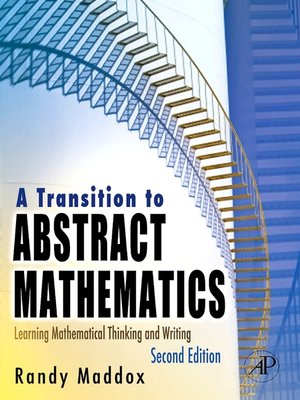A Transition to Abstract Mathematics
ebook ∣ Learning Mathematical Thinking and Writing
By Randall Maddox

Sign up to save your library
With an OverDrive account, you can save your favorite libraries for at-a-glance information about availability. Find out more about OverDrive accounts.
Find this title in Libby, the library reading app by OverDrive.



Search for a digital library with this title
Title found at these libraries:
| Library Name | Distance |
|---|---|
| Loading... |
Constructing concise and correct proofs is one of the most challenging aspects of learning to work with advanced mathematics. Meeting this challenge is a defining moment for those considering a career in mathematics or related fields. A Transition to Abstract Mathematics teaches readers to construct proofs and communicate with the precision necessary for working with abstraction. It is based on two premises: composing clear and accurate mathematical arguments is critical in abstract mathematics, and that this skill requires development and support. Abstraction is the destination, not the starting point.Maddox methodically builds toward a thorough understanding of the proof process, demonstrating and encouraging mathematical thinking along the way. Skillful use of analogy clarifies abstract ideas. Clearly presented methods of mathematical precision provide an understanding of the nature of mathematics and its defining structure. After mastering the art of the proof process, the reader may pursue two independent paths. The latter parts are purposefully designed to rest on the foundation of the first, and climb quickly into analysis or algebra. Maddox addresses fundamental principles in these two areas, so that readers can apply their mathematical thinking and writing skills to these new concepts. From this exposure, readers experience the beauty of the mathematical landscape and further develop their ability to work with abstract ideas.
- Covers the full range of techniques used in proofs, including contrapositive, induction, and proof by contradiction
- Explains identification of techniques and how they are applied in the specific problem
- Illustrates how to read written proofs with many step by step examples
- Includes 20% more exercises than the first edition that are integrated into the material instead of end of chapter







